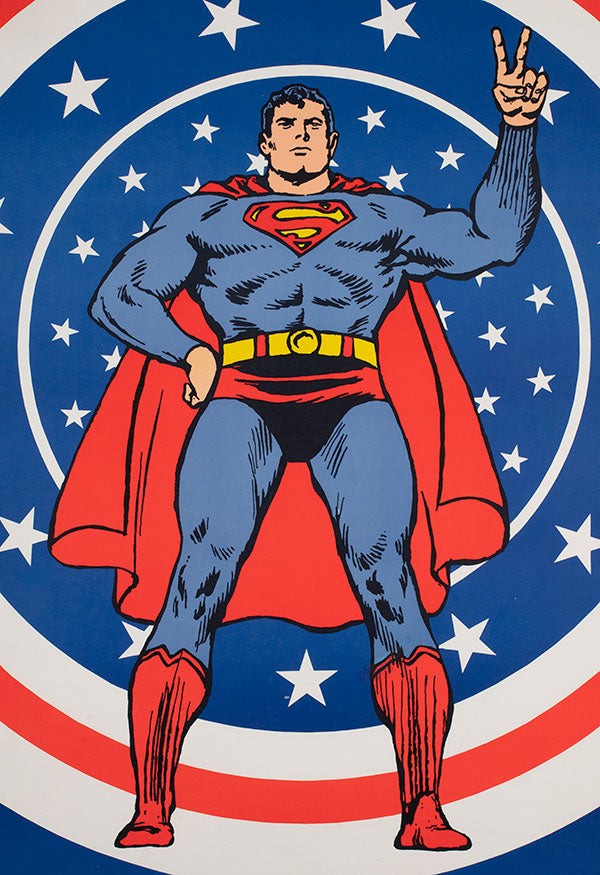Your Cart is Empty
The Polish School of Posters: Masters of Bold and Avant-Garde Design
Arguably one of the most iconic movements in 20th-century visual culture, the Polish School of Posters stands as a bold, striking, and confrontational chapter in design history — as avant-garde as you could ever get.
A New Dawn in Polish Design
The end of the Second World War marked the dawn of a new period in Polish poster art. In the years that followed, the newly installed Communist regime began commissioning artists to create posters not just with political and social messages, but also — and more prominently — to promote cultural life. Through the Ministry of Art and Culture, artists were tasked with designing posters for film, theatre, opera, jazz, exhibitions, concerts, and even the circus (cyrk).
While the government dictated the general ideological boundaries — discouraging Western capitalist aesthetics — artists enjoyed a remarkable level of creative freedom. Free from commercial constraints, they reimagined what a poster could be.
The result was a body of work that was personal, poetic, witty, and often subversive — full of metaphor, abstraction, and symbolism. Each design was executed with a painterly sensibility and handcrafted typography, transforming functional posters into expressive works of art.

The Spirit of the Polish School of Posters
What made the Polish School of Posters so distinct was its fusion of fine art and graphic design. These posters weren’t meant merely to advertise — they were visual interpretations of themes, emotions, and cultural commentary.
Artists painted, collaged, and experimented. They embraced imperfection and texture. Their posters carried layered meanings, sometimes subtly challenging authority or commenting on the absurdity of everyday life under socialism.
The movement influenced generations of designers around the world, reshaping modern graphic communication. Even today, the originality and energy of these works feel contemporary — their wit, emotion, and visual daring undiminished by time.
Spotlight on Five Masters of Polish Poster Design
Wiktor Górka: The Power of Simplicity
Wiktor Górka (1922–2004) was among the most recognisable figures of the movement. Known for his bold compositions and minimalist symbolism, Górka could distill complex ideas into simple, unforgettable visuals. His poster for Cabaret remains one of the most celebrated Polish film posters — a masterclass in emotional economy and design intelligence.

Hubert Hilscher: Geometric Precision and Graphic Clarity
Hubert Hilscher (1924–1999) brought a modernist sensibility to the Polish poster scene. His work often blended strict composition with playful form, merging typography and shape into balanced, elegant designs. Hilscher’s posters have a sense of architectural logic while maintaining warmth and personality — proof that rational structure and emotional resonance can coexist.

Jakub Erol: The Cinematic Surrealist
Jakub Erol (1941–2018) redefined the Polish film poster. His work, often rooted in surrealism and psychological symbolism, transformed promotional material into visual storytelling. Using photomontage, distortion, and fantastical imagery, Erol’s posters for science fiction and horror films remain haunting and influential, bridging pop culture and fine art.

Danuta Żukowska: The Poetic Minimalist
Danuta Żukowska, one of the few women active in the Polish poster movement, brought a delicate yet powerful aesthetic to her designs. Her posters are known for their emotional subtlety, textured surfaces, and thoughtful use of colour. Żukowska’s work highlights how grace and restraint can carry as much power as boldness.

Andrzej Pągowski: The Contemporary Visionary
Andrzej Pągowski (b. 1953) emerged in the later years of the movement and helped carry its spirit into modern times. His posters, often deeply expressive and concept-driven, explore human psychology, politics, and pop culture. Pągowski’s work fuses traditional techniques with contemporary sensibilities, proving that the Polish School’s legacy continues to evolve.

A Global Influence that Endures
The Polish School of Posters was never just a design trend — it was a movement born from cultural resilience and creative freedom. Its impact resonates today across art, illustration, and modern graphic design.
Collectors, museums, and designers around the world continue to celebrate these posters not merely as artefacts of the past, but as living works that challenge how we think about communication, emotion, and the power of visual art.
The posters’ combination of wit, artistry, and human depth ensures they remain timeless — proof that true creativity thrives even under constraint.


